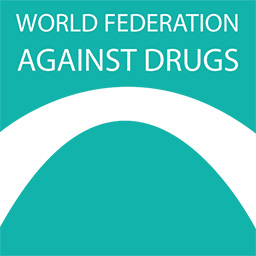Ahead of the holiday season, Gil Kerlikowske, director of the White House Office of National Drug Control Policy, wants to remind parents, teens and families about the dangers of drug abuse.
A better-targeted drug fight
BY GIL KERLIKOWSKE
www.whitehousedrugpolicy.gov
As the demands and distractions of the holiday season approach, I want to remind parents, teens and families about the dangers of drug abuse — which claims more young people’s lives annually than suicides, firearm deaths, or school violence. Despite significant progress in many areas — overall drug use among high school seniors is down 43 percent since its peak in 1979 — there are some troubling signals that are cause for concern.
Among some segments of youth, the perceived harmfulness of using drugs, and disapproval of drug use, has been deteriorating. History shows that this kind of softening of attitudes is often a precursor to increased rates of drug use.
In Florida, three-quarters of sixth graders see a great risk associated with regular marijuana use. However, by the time students reach 12th grade, only 45.5 percent indicate regular marijuana use poses a great risk of harm, according to the 2008 Florida Youth Substance Abuse Survey.
Between sixth and 12th grade, disapproval of alcohol use declines 45.8 percentage points; disapproval of cigarette use declines 34.3 percentage points and disapproval of marijuana use declines 31.1 percentage points.
Despite their low level of use, both lifetime and 30-day prevalence rates for prescription pain relievers (8 percent and 3.2 percent, respectively) and depressants (6 percent and 2.1 percent, respectively) are higher than for all
other illicit drugs, except marijuana and inhalants.
Nationally
More than 2.5 million Americans aged 12 and older began nonmedical use of prescription drugs in 2008 — outnumbering first-time users of marijuana by 300,000.
About one in 10 high school seniors used the powerful pain reliever Vicodin for nonmedical reasons in the past year.
More than one million adolescents (12-17) and 2.7 million young adults (18-25) needed treatment for an illicit drug problem in 2008. Only about 11 percent of these received treatment at a specialty facility.
As these numbers show, patterns of illicit drug use change over time, and constant reevaluation and refinement are required to ensure federal, state and local programs are aimed at addressing current and future challenges, rather than those of the past.
The Obama administration is conducting just that kind of evaluation and will unveil a comprehensive and balanced National Drug Control strategy early next year. With the help of parents, community groups, schools, law enforcement and youth, we believe we can identify and implement new strategies that will allow us to adapt to changing circumstances, now and in the future.
Despite what parents might think, teens do value their advice and involvement. Parents can help guide and protect their children by talking with their kids about the harms of all drug abuse, by setting and enforcing rules that reduce the likelihood that teens will engage in risky behaviors and by keeping all medications in a place inaccessible to teens.
Cultural signals conveyed through a variety of media likely play a role in changing perceptions of risk and the patterns of drug and alcohol abuse. That is why the National Anti-Drug Media Campaign targets youth and parents with advertising and educational materials about the dangers of drug abuse. Statistics show that this can work, with the prevalence of past-month drug use significantly lower among young people who have seen or heard prevention messages from sources outside schools.
The Campaign’s web site, theantidrug.com, also offers important resources for parents and those interested in combating illicit drug use in their families and communities.


Leave a Reply
You must be logged in to post a comment.